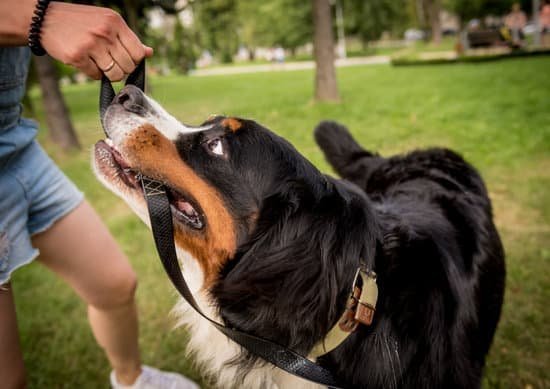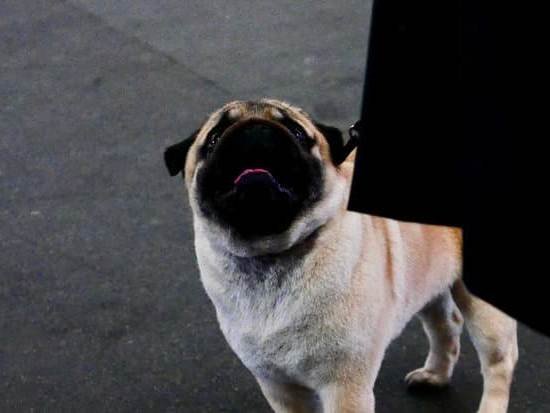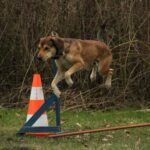Leash Training Rescue Dog
Many people who adopt rescue dogs are not experienced in dog leashing and handling. As a result, they may not realize that leash training is an essential part of bringing their new dog into their home.
Leash training is important for two primary reasons. First, it helps keep both the dog and other people safe. A dog who is properly leash-trained will not pull on the leash and will walk by your side. This prevents the dog from getting into dangerous situations, such as running into the street or getting into a fight with another dog.
Second, leash training helps create a strong bond between you and your dog. A dog who is properly leash-trained knows that he is under your control and will look to you for guidance. This makes it easier to train your dog in other commands and behaviors.
The best way to leash train your dog is to start early, while he is still a puppy. Be consistent in your commands and rewards, and be patient – it may take a while for your dog to learn. In the meantime, keep him on a short leash and don’t allow him to wander off. As your dog becomes more obedient, you can gradually increase the length of the leash.
If you have an older dog who has never been leash-trained, it will take longer to teach him the basics. Start by putting him on a leash and collar, and then take him for a walk. Be patient and consistent, and reward your dog when he follows your commands. It may take several weeks or even months for your dog to learn how to walk nicely on a leash.
With a little patience and effort, you can have a well-behaved dog who is safe and happy to walk by your side.
How To Train Dogs Not To Pull On Leash
One of the most common issues dog owners face is dogs who pull on leash. This can be frustrating and dangerous for both the dog and the owner. Fortunately, there are some tips and techniques that can help train dogs not to pull on leash.
The first step is to make sure that you are using the correct type of leash. A leash that is too long or too thin will allow the dog to pull far ahead of you, making it difficult to control them. A shorter, thicker leash will give you more control and make it easier to keep the dog close to you.
When you are first training your dog not to pull on leash, you will need to be very consistent and patient. Start by putting the leash on your dog and walking around the house or yard. If the dog starts to pull, stop walking and wait until they calm down before continuing. If you allow them to pull on the leash, they will only get more excited and continue to pull.
Once your dog is walking calmly on leash, start to take them for walks outside. Again, if they start to pull, stop and wait for them to calm down before continuing. Gradually increase the distance and difficulty of the walks as your dog becomes better behaved.
In addition to training your dog not to pull on leash, it is also important to train them to come when called. This will help keep them safe when they are off leash. To train your dog to come when called, start by calling their name and rewarding them with a treat when they come to you. As they get better at this, start calling them when they are further away and eventually when they are off leash.
With patience and consistent training, your dog can learn not to pull on leash and to come when called. This will make walks much safer and more enjoyable for both of you.
Training Dog Off Leash
There is no need to be nervous about training your dog to be off leash. It is a process that can be easily learned with a little patience and consistency. The first step is to make sure your dog is properly trained on leash. Once your dog understands how to walk nicely at your side and come when called, you can begin to work on off leash commands.
One of the most important things to remember when training your dog to be off leash is to keep your commands consistent. Whether you are using hand signals or verbal commands, make sure you use the same words and signals every time. This will help your dog to better understand what you expect from them.
Start by gradually increasing the distance between you and your dog. If your dog is having trouble staying close to you, try using a long leash or training collar to give them more freedom. As your dog becomes more confident and reliable, you can gradually decrease the length of the leash until they are able to stay close to you without any assistance.
It is also important to keep your training sessions short and positive. Dogs can quickly become frustrated if they are not able to master a command right away. Be sure to praise your dog for their efforts, and end the training session on a positive note.
With a little patience and consistent training, your dog can be off leash and responding to your commands in no time.
Train Dog To Walk On Leash
It is important to train your dog to walk on a leash. This will provide both you and your dog with a sense of security and control. There are a few basic steps you can take to train your dog to walk on a leash:
1. Start with basic obedience commands such as “sit” and “stay”. Once your dog has mastered these commands, you can move on to training them to walk on a leash.
2. Put your dog on a leash and take them for a walk. Be sure to keep your leash loose and allow your dog to explore. When your dog begins to pull on the leash, stop and wait for them to calm down before continuing on your walk.
3. If your dog continues to pull on the leash, give them a short tug and say “no”. This will let them know that they are not allowed to pull on the leash.
4. Reward your dog with a treat when they walk on the leash without pulling. This will help to reinforce good behavior.
It is important to be patient and consistent when training your dog to walk on a leash. With a little bit of patience and practice, your dog will be walking by your side in no time!
Dog Training Leash Pulling
Leash pulling is a common problem that dog owners face. Dogs pull on their leashes for a variety of reasons, including excitement, boredom, or to get to something they want. If your dog pulls on his leash, it can be frustrating and dangerous.
There are a few things you can do to help your dog stop pulling on his leash. First, make sure that you are using the correct type of leash. A leash that is too thin or too short can easily be pulled out of your hand. A leash that is too long can be a tripping hazard. Use a leash that is the correct length for your dog and is made of a sturdy material, like leather or nylon.
Second, make sure that you are using the correct type of collar. A collar that is too tight can cause respiratory problems, and a collar that is too loose can easily be pulled off. Use a collar that fits your dog comfortably and is made of a sturdy material.
Third, make sure that you are using the correct type of training collar. A training collar is a collar that has a leash attachment on one end and a collar attachment on the other. A training collar can be used to prevent your dog from pulling on his leash. When your dog pulls on his leash, the training collar will tighten around his neck, which will discourage him from pulling.
If your dog is still pulling on his leash, you can use a training harness. A training harness is a harness that fits tightly around your dog’s chest and has a leash attachment on the back. When your dog pulls on his leash, the training harness will pull him backwards, which will discourage him from pulling.
If your dog is still pulling on his leash, you can use a training head halter. A training head halter is a head halter that fits tightly around your dog’s head and has a leash attachment on the back. When your dog pulls on his leash, the training head halter will pull his head down, which will discourage him from pulling.
If your dog is still pulling on his leash, you can use a training clicker. A training clicker is a small, hand-held device that makes a clicking noise. When your dog does something you want him to do, you can click the training clicker to let him know that he did a good job. The training clicker can be used to train your dog to stop pulling on his leash.
If you are using a training collar, a training harness, or a training head halter, you will also need to use a training leash. A training leash is a leash that is made of a sturdy material, like leather or nylon, and is the correct length for your dog.
If your dog is still pulling on his leash, you can use a training lead. A training lead is a lead that is made of a sturdy material, like leather or nylon, and is the correct length for your dog. A training lead can be used to prevent your dog from pulling on his leash. When your dog pulls on his leash, the training lead will tighten around his neck, which will discourage him from pulling.
If you are using a training collar, a training harness, or a training head halter, you will also need to use a training treat. A training treat is a small, tasty treat that you can give to your dog to reward him for good behavior.
If your dog is still pulling on his leash, you can use a training clicker. A training clicker is a small, hand-held device that makes a clicking noise. When your dog does something you want him to do, you can click the training clicker to let him know that he did a good job. The training clicker can be used to train your dog to stop pulling on his leash.

Welcome to the blog! I am a professional dog trainer and have been working with dogs for many years. In this blog, I will be discussing various topics related to dog training, including tips, tricks, and advice. I hope you find this information helpful and informative. Thanks for reading!





